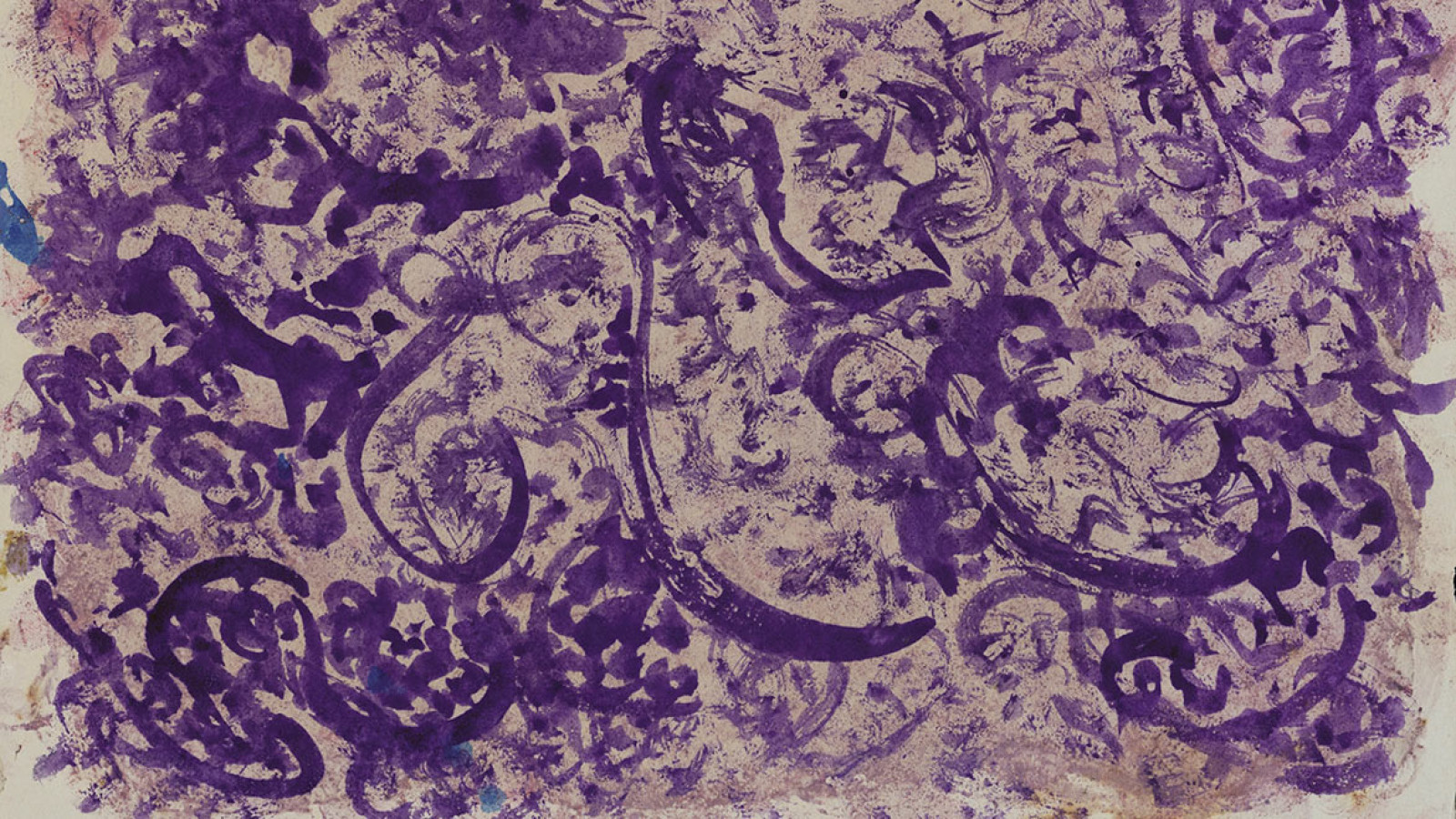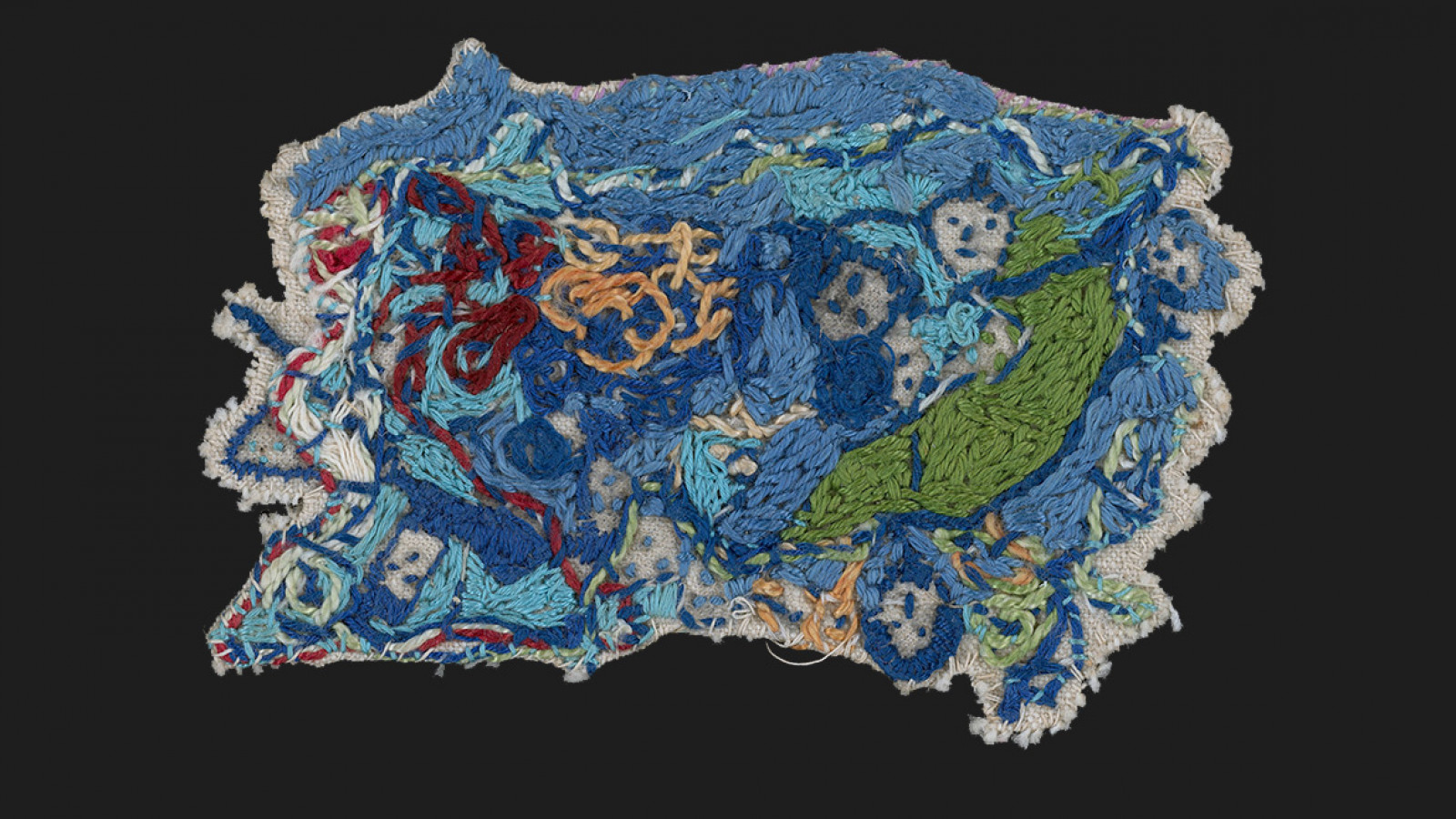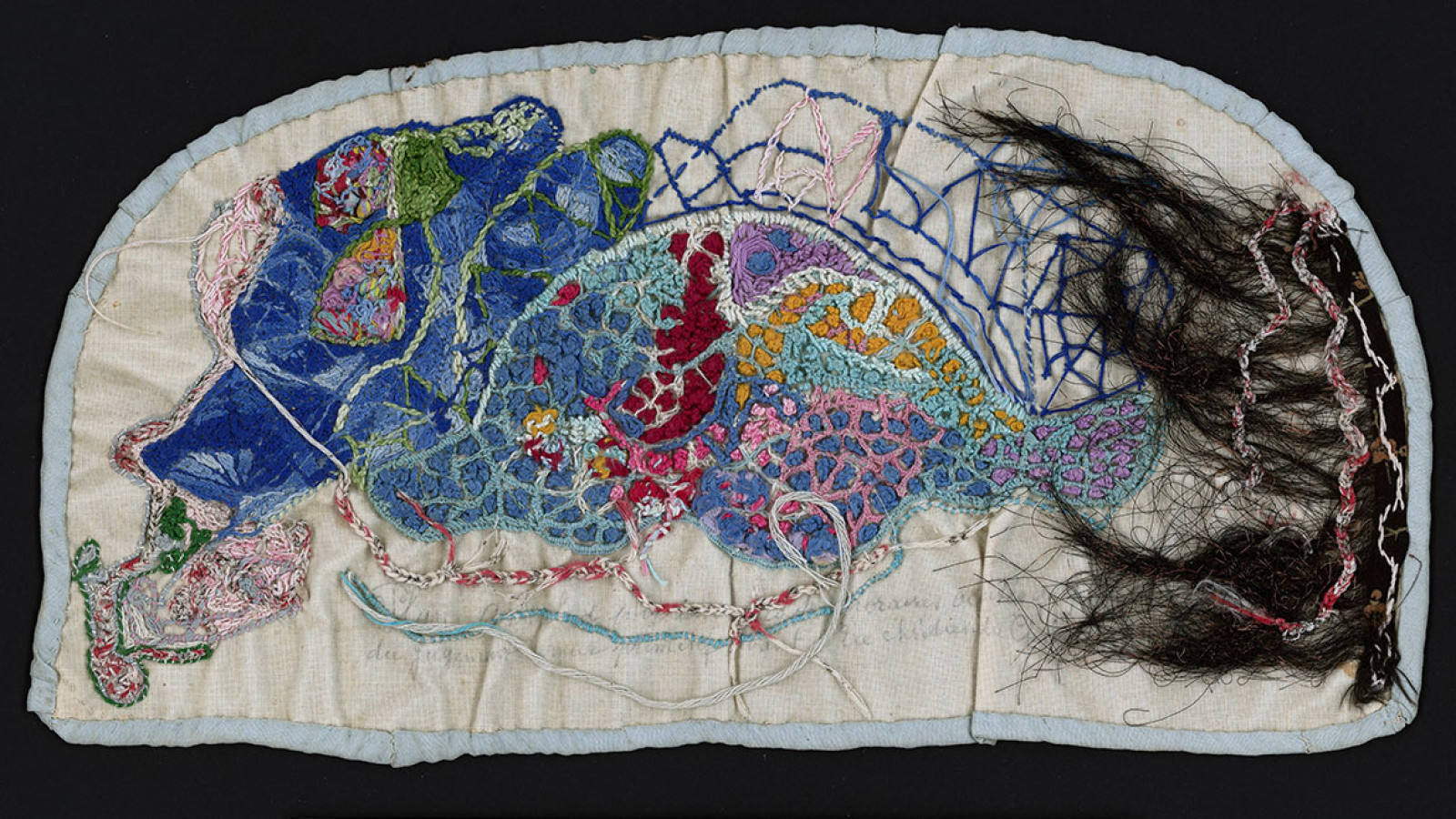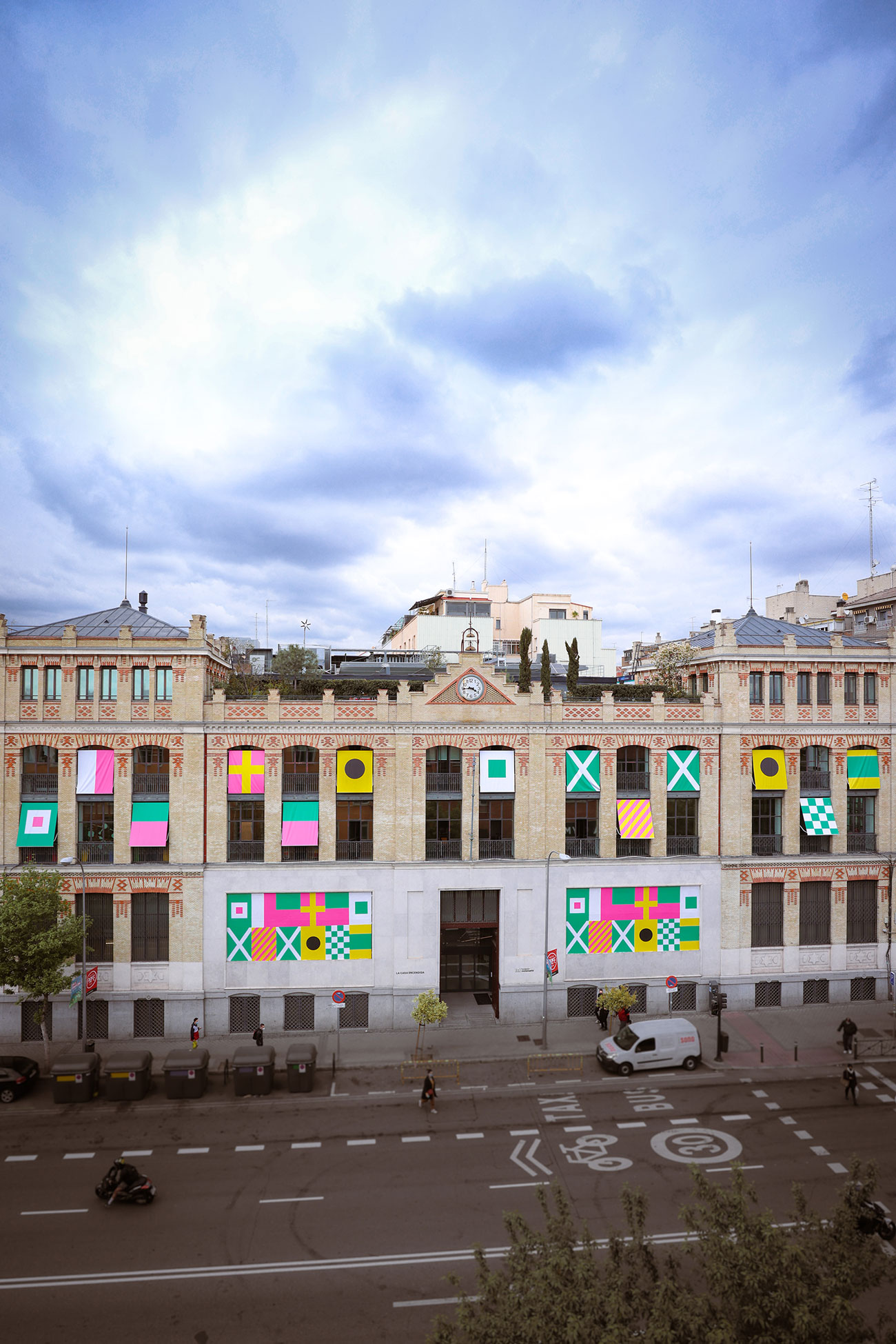Jeanne Tripier. Creation and Delirium
This exhibition is part of an ongoing line of research, begun ten years ago at La Casa Encendida, which attempts to shed light on the creative drives and relationships of artists classified as outsiders in different senses and the artistic avant-gardes of the 20th century.
The show Creation and Delirium revolves around the life and work of a little-known artist in Spain, Jeanne Tripier (Paris, 1869–Neuilly-sur-Marne, 1944), and aims to highlight an aspect of artistic creation related to the fascination with the non-material world experienced in altered states of consciousness. The exhibition consists of works from the Collection de l’Art Brut in Lausanne.
The show’s curator, Aurora Herrera, previously curated two exhibitions on the great English theatre director and set designer Edward Gordon Craig and the great American artist, choreographer and dancer Loïe Fuller. Both artists expressed and positioned themselves in what were clearly fringe territories: the former worked with the materiality of light and space on the theatrical stage, and the latter rendered the energy of light visible through dance, the human body and attire.
The historical figure of Jeanne Tripier and the work she produced during the ten years she was a patient at the asylum of Neuilly-sur-Marne, where she died, are both captivating and poetic. The artist's self-taught nature, the link between her visual works and embroideries and her mental illness, her psychopathic-megalomaniacal outbursts and the connection with her matter-rich manifestations or reincarnation as other individuals—such as Joan of Arc—in her personal battle as an interplanetary vigilante all contrive to make her a truly fascinating character.
Tripier’s creations played a vital role for her as psychic boards, filled with messages that offer insight into her inner world, the intrinsic expression of her ego. They were also important as direct “revelations” of visions that defied artistic conventions of which she, a self-taught artist, knew nothing, and allowed her to cross the established boundaries of representation.
The different instinctive drives encapsulated in her works lead us on a journey through expression, transgression, play and obsessive repetition as a constant presence in life, even if that life is an impossibility.
Another reason why Jeanne Tripier and her work are so fascinating is the fact that she used embroidery as a means of expression and therapy: the repetition involved in the act of embroidering and the frame of mind it creates draws us closer to the everyday world of women who, throughout history, have used this activity as a distraction from reality and mental respite.




